MCL Voice Operator Login App
Overview
MCL Voice Operator Login is the compatible login app for target devices that allow for speech applications.
It allows the operator to log in through speech (to speak his login ID) as well as use the keyboard (HW or SW) or read a barcode with the login ID (if the target device includes a barcode scanner).
The following step-by-steps illustrate the use of this login application in a WT6000 Android device.
To Log In to MCL Voice Operator Login
Step-by-step
1. Launch App Desktop.
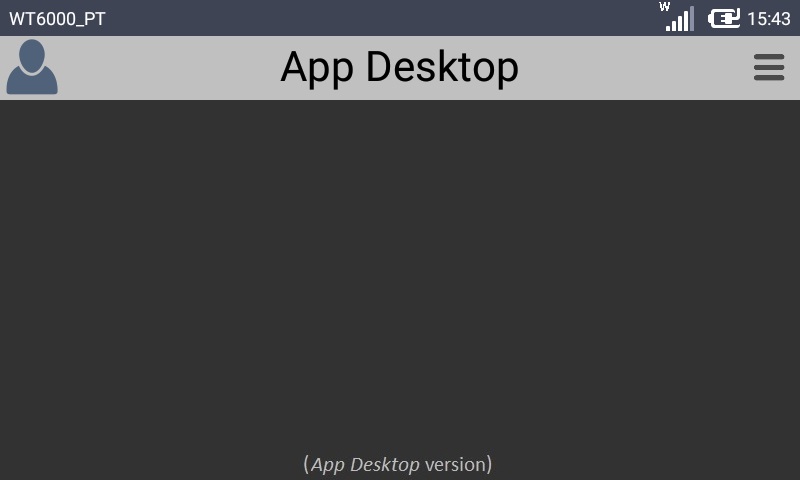
2. Press ![]() .
.
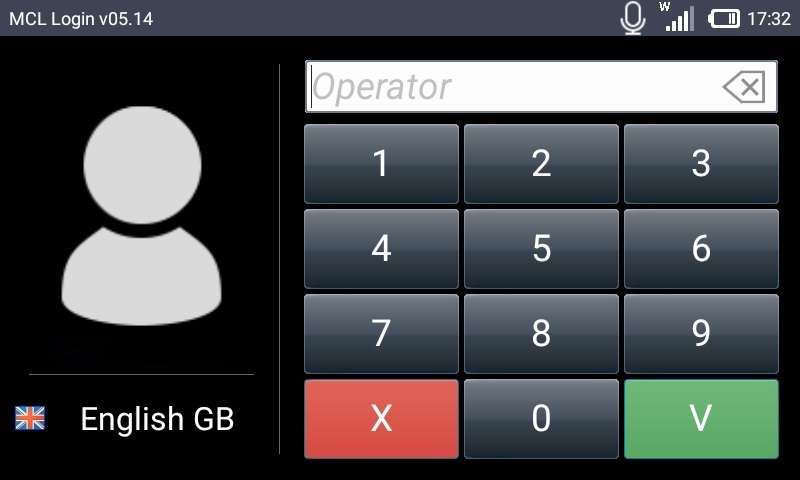
![]() The operator icon (located to the left) provides information on the type/state of the used headset.
The operator icon (located to the left) provides information on the type/state of the used headset.
Switched On Bluetooth Headset |
Muted Bluetooth Headset |
Switched On Wired Headset |
Internal Speaker (No Headset) |
|
|
|
|
3. Use one of the following to enter your login ID:
a. Say your login ID and, according to the prompt instruction you hear, conclude by saying "ready".
b. Enter the login ID in the keyboard (use the HW or SW keyboard) and press ![]() .
.
c. Use the device's scanner and read the barcode that represents your login ID (if available for the target device).
If you get an error message, check Possible Login Errors.
![]()
The "Login ID" refers to the information defined in the field with the same name in the operator's profile (in the "Operator Details" page).
Since the MCL Voice Operator Login application does NOT require a password for authentication, the operator's profile CANNOT include a password - the "Password" option of the "Access Rights" tab in the "Operator Details"page MUST be blank.
4. Perform the calibration by following the prompted instructions:
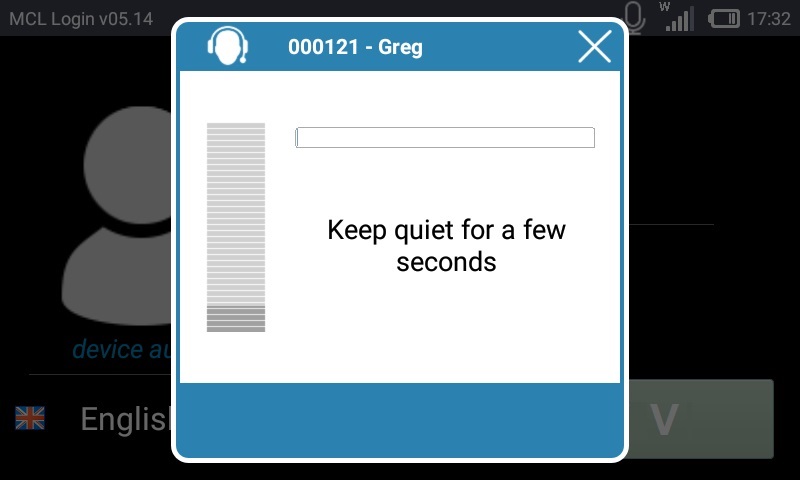
![]()
![]()
![]()

![]()
![]()
![]()
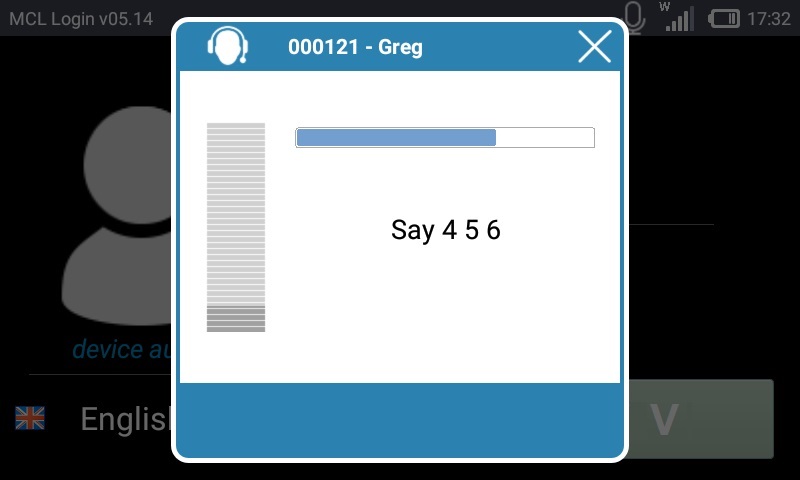
![]()
![]()
![]()
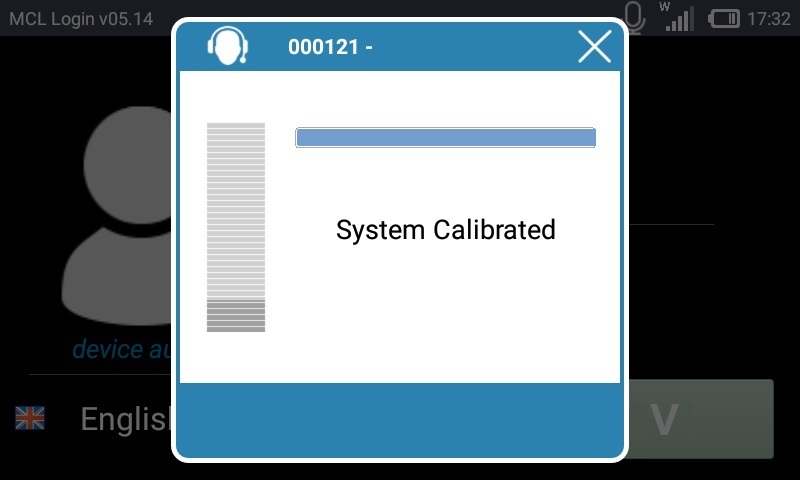
The operator is, now, logged in.
To launch an application, the operator must press the corresponding application shortcut icon (Manual Launch).
If App Desktop is only intended to contain one application, you can define an Automatic App Desktop Launch - once the operator logs in, the application is launched. This requires a specific setting within that application - during project development, define "application code = mcl" in the project's properties (Project menu > Properties option > Application Info tab > App. Code option).
App Desktop View after Operator Log In
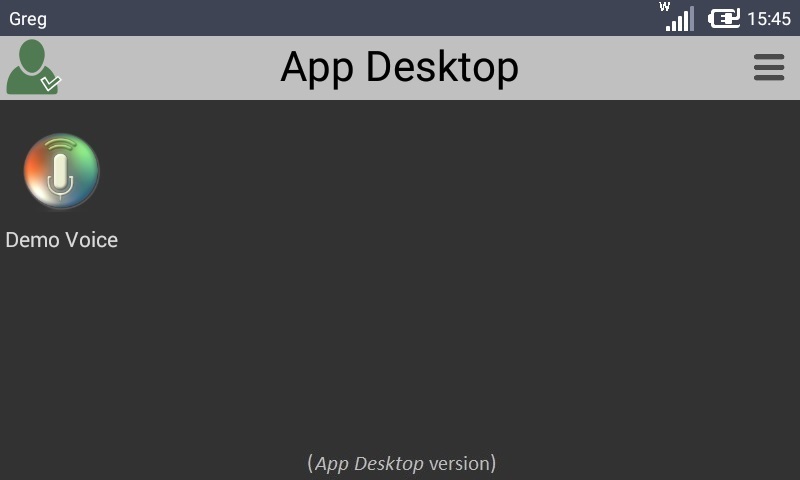
•The operator login icon (on the upper left corner) has changed to ![]() .
.
•The device name (on the upper left corner) has been replaced with the logged in operator's short name (information entered in the operator's "Operator Details" page - "Short Name" field).
•App Desktop displays the application(s) available to the logged in operator.
![]()
The viewing of the applications in App Desktop is managed via the logged in operator's operator group. In other words, you can define which applications should be available for the operators of a specific operator group (in the "Operator Group Details" page - "Access Rights" tab). If no restriction is defined, all applications are available.
MCL Voice Operator Login View
If the operator clicks ![]() (in App Desktop), he opens the main window of the MCL Voice Operator Login application:
(in App Desktop), he opens the main window of the MCL Voice Operator Login application:
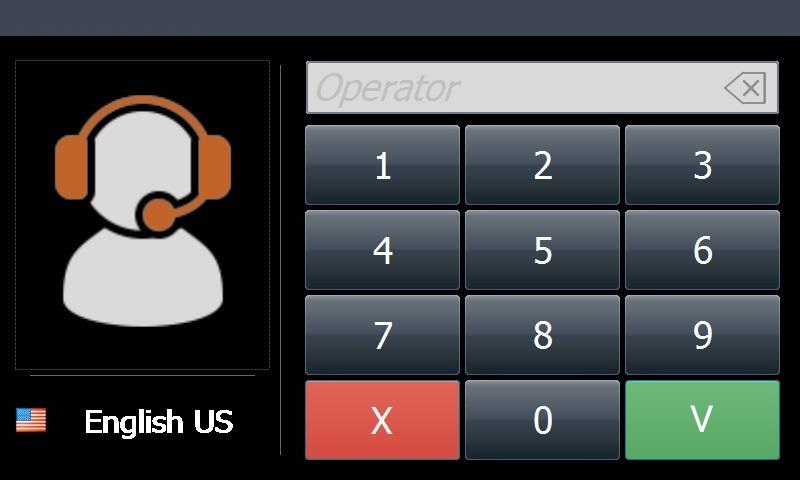
It displays the following information/options:
•The operator icon (located to the left) provides information on the type/state of the used headset.
Switched On Bluetooth Headset |
Muted Bluetooth Headset |
Switched On Wired Headset |
Internal Speaker (No Headset) |
|
|
|
|
•If the operator is using a bluetooth headset:
a. its model will be displayed below the operator icon
b. the headset's battery power level will be displayed - there is a bar in the headset representation:
|
|
|
|
|
Battery: Full |
Battery: Medium |
Battery: Low |
Battery: Critical |
Battery: Error |
c. the headset's microphone position will affect speech input, meaning, if the microphone is down (facing the operator's mouth), the login app is ready to accept speech input. If the microphone is upright, the login app does NOT accept speech input. The microphone positioning is reflected by the speech icon displayed in the screen's header(upright microphone ![]() /downwards microphone
/downwards microphone ![]() .
.
•The current output language is displayed below the operator icon:
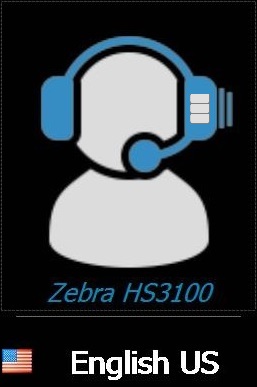
Ex: "English US" is the current output language.
•Having an output language available for speech applications implies having the corresponding language packages installed in the device. If the device has more than one language installed, it is possible to change the output language (ex: If the operator is handling a device that has the language packages for English US and Italian installed, he can choose one of those two to be the output language, as needed).
Proceed as follows to change the current output language:
a. Click inside the ![]() area. This expands a list with the available output languages.
area. This expands a list with the available output languages.
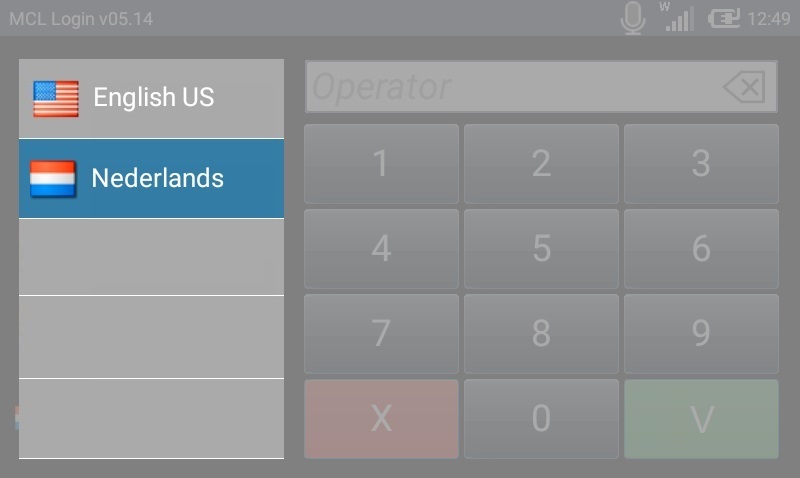
b. Select the intended language. Once you select it, the list collapses.
Other Available Speech Features
•The operator is provided with specific speech related icons/options. Below are the available speech icons and what they represent:
Speech Icon States |
||
Headset Microphone |
Internal Microphone |
State Description |
|
|
Speech application is running but speech input is disabled. |
|
|
No current speech input. |
|
|
Receiving speech input. |
|
|
Speech input recognized/accepted with a good score. |
|
|
Speech input recognized/accepted with a low score. |
|
|
Speech input not recognized/rejected. |
|
|
There is a Recognizer error which can be caused by invalid grammar. |
Other Icons |
||
|
Not Applicable |
The battery of the bluetooth headset is down to 35%. |
|
Not Applicable |
NO speech input is accepted because the microphone of the bluetooth headset is vertically positioned. |
•If the operator presses ![]() or
or ![]() (whatever the state), he can also access speech related options:
(whatever the state), he can also access speech related options:
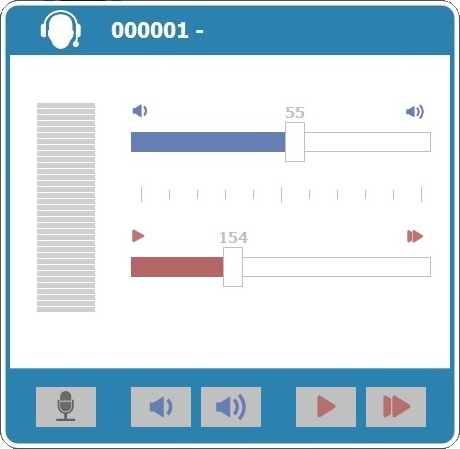
This window includes the following:
|
Use these buttons to lower or increase the volume of the speech output (what you hear). As an alternative, use the corresponding slider (identified with the same icons) to change the volume levels. Whenever you edit the volume, you hear a speech prompt illustrating that change. |
|
Use these buttons to lower or increase the speed of the speech output (what you hear). As an alternative, use the corresponding slider (identified with the same icons) to change the speed levels. Whenever you edit the speed, you hear a speech prompt illustrating that change. |
|
Use this button to perform a calibration. See Calibration. |
To close this window, click outside it.
![]()
Although the operator is using a speech operator login application, he CANNOT launch an application in App Desktop, via speech (meaning, speak the application's name). There are only two ways to launch an application in the App Desktop environment:
•Manual Launch - The operator presses the intended application's shortcut icon.
•Automatic App Desktop Launch (only applicable if the operator is supposed to access one application only)
App Desktop is configured to automatically launch the intended application with a specific setting: "application code = mcl" - this setting is defined in MCL-Designer V4, during project development, in the project's properties (Project menu>Properties option > Application Info tab > App. Code option).
![]() The speech profile and/or adaptation data of the logged in operator is retrieved from your MCL-Mobility Platform account and applied whenever the operator uses speech input.
The speech profile and/or adaptation data of the logged in operator is retrieved from your MCL-Mobility Platform account and applied whenever the operator uses speech input.
To Log Out of MCL Voice Operator Login
Auto-Logout - There is an automatic log out from the login app if the logged in operator is idle for more than 5 minutes in the App Desktop environment. App Desktop is still open but the operator will have to log in again.
The Auto-Logout is only triggered within the App Desktop environment. Once the operator is working in an application, the Auto-Logout time out does NOT execute regardless of any idle periods.
Manual Log Out - The logged in operator can perform a manual log out via the login app's GUI whenever he chooses to do so. Proceed as follows to do so:
Step-by-step
1. Exit the application you were working with to return to App Desktop.

2. Press ![]() .
.
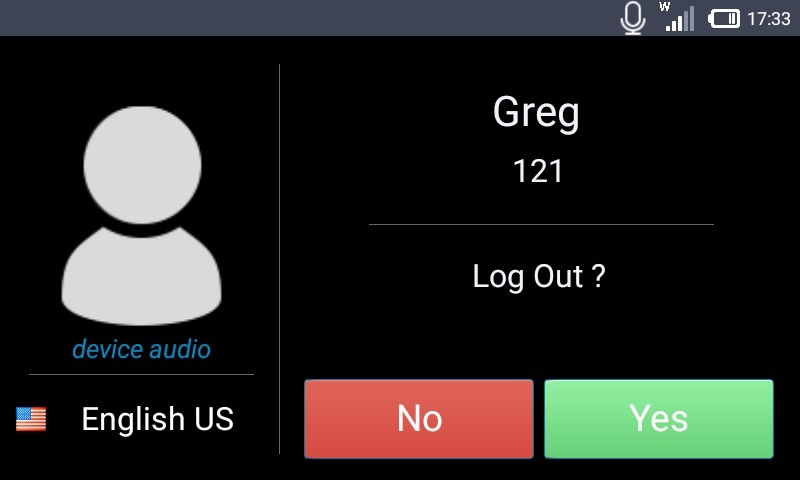
3. Confirm the logout:
a. say "Yes"
OR
b. Press the corresponding button (![]() ).
).

The operator has successfully logged out. Therefore, the App Desktop view has changed:
•The icon on the upper left corner has changed back to ![]() .
.
•There are no application shortcuts available.
•The short name of the operator has been replaced with the device name.
![]()
Do not forget the Auto-Logout feature - if the operator is in the App Desktop environment (has NOT launched an application) and there is no activity for more than 5 seconds, the operator is automatically logged out and has to perform the login again to continue.
"operator and/or password incorrect"
Cause: The entered operator is incorrect.
Action: The operator must confirm the correct login ID and, then, repeat the login.
"operator language not installed on device"
Cause: The language defined for the operator's speech input is NOT installed on the device.
Action: The missing language must be installed on the device before the login operation can be repeated.
"Setup error (No License and/or Speech Languages Detected"
Cause: The device does NOT have any TTS/ASR languages installed OR its MCL-Client license is NOT valid, meaning it does NOT have speech attributes.
Action: Confirm if the device includes any TTS/ASR languages and, if not, install them AND/OR check if the device's MCL-Client license allows for the use of speech applications.